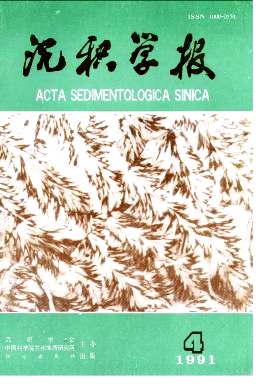The Depositional Characteristics of Late Pleistocene and the Distribution of Placer Gold in Guanmadian, Eastern Liaoning
- Received Date: 1989-12-13
- Publish Date: 1991-12-10
Abstract: Based on the shallow shaft sections made for mining placer gold , general characteristics , heavy minerals and palaeo- sedimentary environments of Late Pleistocene in Guanmadian , eastern Liaoning are disscussed in this paper. Late Pleistocene strata can be divided into three sections in Guanmadian according to the lithological characteristis: sand-gravel bed in the lower, gravel-bearing loess in the middle and clayey soil in the upper section.The assemblage of heavy minerals shows that there are two kinds of sand-graval sediments: one is short transported and deposited in situ , aother is long distance transported allochthonous deposit and loess of which are both autochthonous and allochthonous.The palaeoclimate can also be revealed by heavy minerals that it was a little drier and cooler than the present when the bottom of the section was deposited, and then , it turned warmer, finally it became very draught and cold (i.e. the loess sediment) and turned into periglacial climate. Heavy minerals , mean dip vector and mean grain size of gravels indicat that during Late Pleistocene, Guanmadian area was a part of p^laeochannel which flown from Xidian to Xiaohekou, while deposits are mainly slope wash facies, river facies and flood plain facies , and loess sdeiments were form by both wind and water flow. Placer gold of Guanmadian area mainly distribute in the bottom of Late Pleistocene, the components of which is very complicated and belongs to eluvial and slope washed material. Alluvial placer distribute mainly along with the palaeochannel as bands and the contents of gold is very stable .There is little placer in the upper of Late Pleistocene.
| Citation: | Cheng Yan, GaoMingxin. The Depositional Characteristics of Late Pleistocene and the Distribution of Placer Gold in Guanmadian, Eastern Liaoning[J]. Acta Sedimentologica Sinica, 1991, 9(4): 143-150. |






 DownLoad:
DownLoad: